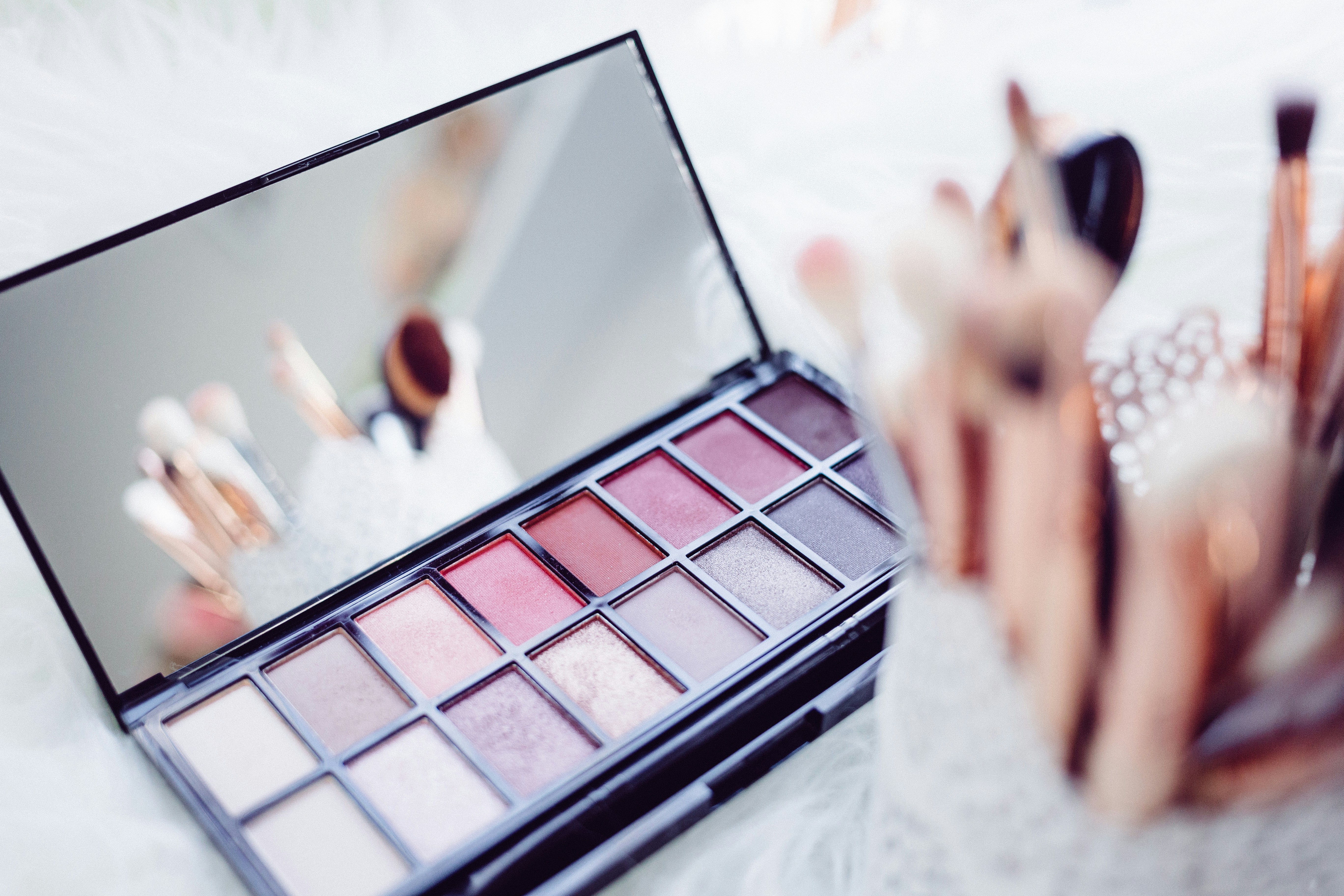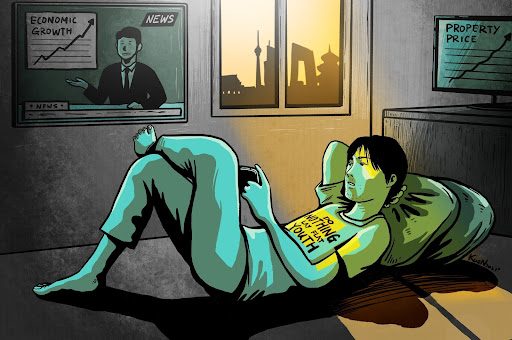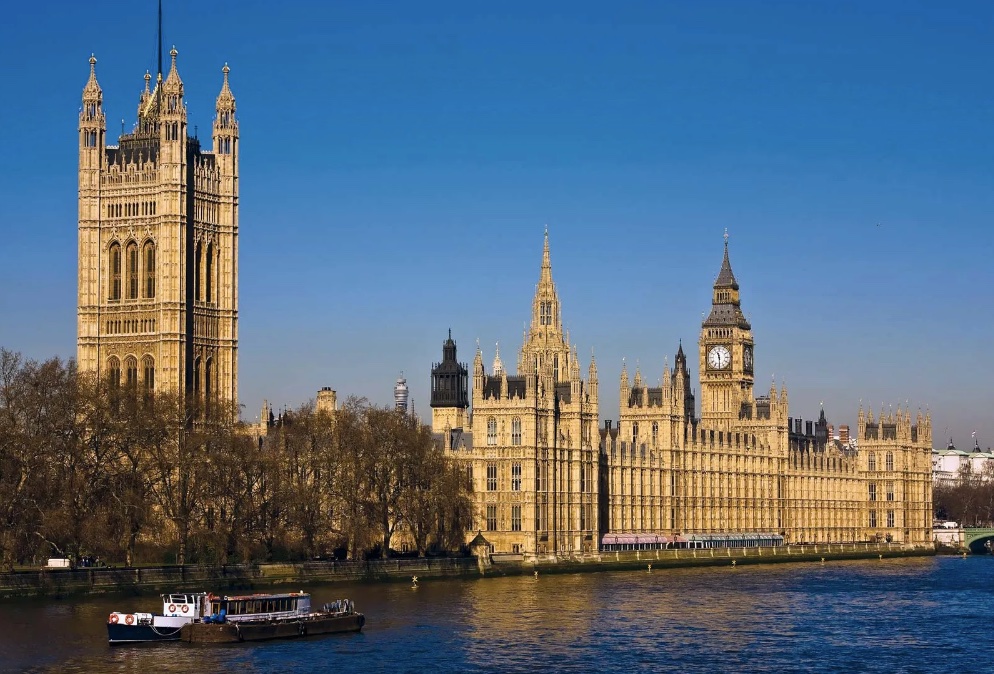
Writer: Fiona Kim | Editor: Ava Inman
When the Trump administration announced its sweeping tariffs, you thought you were in the clear. Perhaps you’ve recently gone vegan, embraced thrifting, switched to reusable water bottles, or finally put that dusty Keurig in the back of your garage to work. In the quest to become a more ethical consumer, you’ve curated a beauty routine that aligns with your values, skin texture, hair type, and budget—turning mornings and nights into moments you cherish. But suddenly, your go-to concealer reeks of an unfamiliar scent. That snail mucin serum you discovered on Tiktok? Out of stock. Even the holy grail sunscreen that protects your skin barrier from ruthless Bay Area weather has become a luxury you can’t justify. Finally, it hits you: tariffs aren’t just raising the prices of metals, cars, and pharmaceuticals. They’re coming for your self-care, too.
The effects of recent tariffs may seem abstract—why worry about a 25% rise in the price of metal when the average American buys ten cars in their lifetime? But what if those price hikes extended beyond once-in-a-decade purchases, affecting the cost of items as routine as a single mascara stick? Suddenly those price jumps feel much more real.
The beauty industry is a daily necessity for most Americans. According to a survey conducted by Lending Tree, three-quarters of Americans consider beauty products and services vital, spending an average of $1,754 annually on products alone. While it may seem intuitive for imported items to see price hikes matching new tariff fees, even domestically made beauty products aren’t exempt; rising costs for producers drive up prices across the board, affecting consumers regardless of where their products are manufactured.
Inflation’s Hidden Shades
But why are the prices of beauty products rising when there’s no tariff on them exclusively? Just like your beloved skincare products, inflation comes in different forms. Driven by a rise in raw material expenses, cost-push inflation is the most obvious culprit: when production costs increase and manufacturers are forced to raise prices to maintain profit margins. From rare eye shadow pigments to snail mucin serums to signature, near-heavenly fragrances, many essential beauty ingredients are sourced internationally (and often from brands lacking full transparency.) Even domestically made products are not immune, as their packaging itself—sleek glass bottles and plastic squeeze tubes—often originate from countries like China, which are now subject to elevated costs due to the freshly implemented 20% tariff on Chinese imports.
But prices don’t just rise in response to higher material costs. Brands that anticipate sourcing difficulties or raised production costs might preemptively raise prices, a classic example of demand-pull inflation. According to research by Vox, supply-related shocks accounted for 49% of global inflation variation from 2020 to 2023; with few affordable alternatives, consumers ultimately shoulder much of the tax burden. And unlike your daily makeup routine, the consequences will be far from glam.
Price hikes are not the only side effect of tariffs. To offset rising costs, brands can resort to measures that may not “break the bank” but arguably yield just as wicked results. Enter “shrinkflation,” the art of sneakily reducing product quantity while keeping prices unchanged. It’s the reason your favorite moisturizer now comes in a smaller jar—or why your “party size” Double Stuf Oreos mysteriously vanish within days (at least, that’s what I tell myself.)
Even more surreptitious is “skimpflation,” lowering product quality rather than size. Don’t be surprised if your fresh tube of non-stick, ocean-safe, sweat-proof SPF 50+ sunscreen suddenly starts pilling upon application or, worse, leaving a spooky white cast that haunts you through morning lectures. Companies may try to disguise the impact of tariffs, maintaining the illusion of business as usual, but behind the scenes, they’re quietly cutting costs—shrinking sizes, diluting formulas, and hoping consumers won’t notice they’re paying the same prices for less.
Navigating the Tariff-Laden Glamscape
Among the hardest hit will be small beauty brands. Local businesses often compete on unique formulations and specialized products, operating with thinner profit margins that leave little room to absorb increased costs without raising prices. Unlike major American conglomerates such as Maybelline and e.l.f., small brands face low demand elasticity; their customers can easily turn to more affordable alternatives when prices rise. Concerns about the sustainability of small brands in a tariff-driven economy are not unique to beauty; according to The New York Times, family-owned businesses within the hardware and clothing industries have already voiced concerns about bearing much of the tax burden.
Lacking resources to lobby against tariffs, small businesses will have to choose between reducing quality or raising prices, both of which risk alienating customers and weakening competitiveness in an already concentrated market. While tariffs are often meant to support American-owned businesses and domestic production, levies within the beauty industry will hurt the very businesses they aim to protect.
What’s also clear is that women will be disproportionately affected by the evolving beauty economy. Research by the Joint Economic Committee revealed that women already pay 13% more for personal care products marketed by gender, a phenomenon known as the “Pink Tax.” Given that women often maintain more dedicated and multi-step beauty routines, these price disparities are likely to worsen as the cost of imports rises. For women of color, the impact is even more pronounced; relying on international brands catering to specific hair and skincare needs, minority women often lack viable alternatives and may thus be forced to absorb higher costs. For instance, McKinsey & Company found that black consumers are three times more likely to be dissatisfied with their options for hair care, skincare, and makeup, suggesting gaps in accessibility and affordability that will only seem to widen.
The Glow-Getters
While consumers will certainly feel the squeeze, several entities stand to gain. Facing reduced competition among foreign competitors, major American brands may seize the opportunity to inflate prices across product lines, knowing consumers have limited affordable alternatives. Although seemingly improbable, artificial inflation is not impossible; when the Trump administration imposed a 20% tariff on foreign-made washing machines in 2018, dominant American brands raised the prices of both washers and dryers by 11.5%. However, according to an article by The New York Times, dryers were unaffected by the new tariffs. Raising the prices of complementary goods is especially concerning, as it partially conceals the increased cost of a single item. So if you plan to stock up on shampoo and conditioner before new prices hit, you might as well grab some heat protectant, dry shampoo, hair oil, and styling gel, too.
The counterfeit market is also on track to excel. For many, counterfeit products appear as an attractive compromise between sticking to a familiar routine and managing rising costs. According to a recent article by Happi, online platforms like Amazon and TikTok Shop have seen an explosion of dupes, contributing to a now $4.6 billion issue within the industry. As the prices of their authentic counterparts rise, counterfeits may emerge as even more competitive options due to reduced costs at every stage of production—from inferior ingredients to unregulated labor to a unique and unchecked ability to rely heavily on highly replicable brands.
But beyond the suspicious shades of discounted concealer lies a more serious risk of chemical exposure, paving the way to allergic reactions, chemical burns, infections, and even hair loss. So you might want to check those Amazon reviews before mindlessly clicking that “Buy Now” button—or giving your new products a patch test, just to be sure.
Full Coverage: What’s Next
With rising costs and economic uncertainty, many consumers are embracing minimalist beauty trends, practicing “skinimalism” or adjusting to multi-use products, as stated by Wendy Gould. However, resisting the overwhelming temptation of beauty hauls and limited-edition, exclusive-access, rare-find products is no small feat, especially when social media thrives on the next viral must-haves. But beyond the Reels and YouTube product reviews, there’s a growing pressure for women to conform to now-global and evolving standards that have created a landscape where beauty’s social, economic, and environmental costs are more pronounced than ever (and certainly not evenly spread.)
The question is no longer what we purchase but who pays the price—and the price of beauty has never been higher.
Feature Image by freestocks on Unsplash



